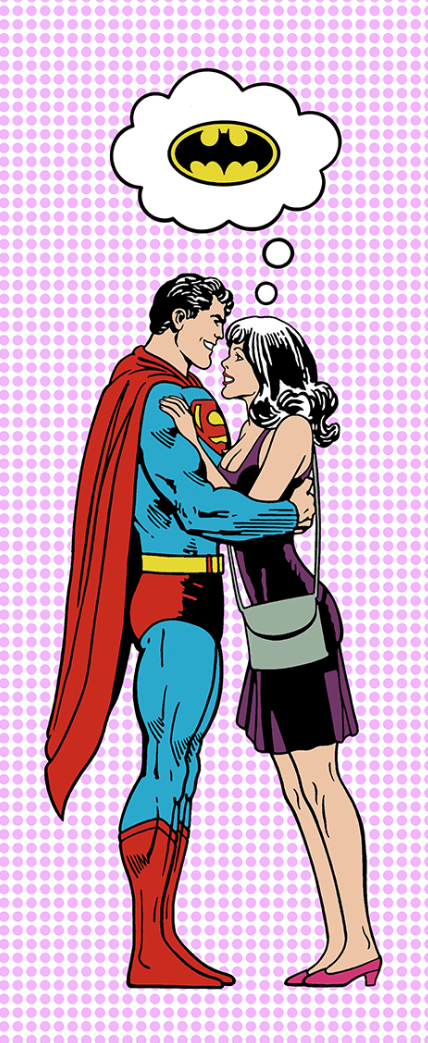
Divorce
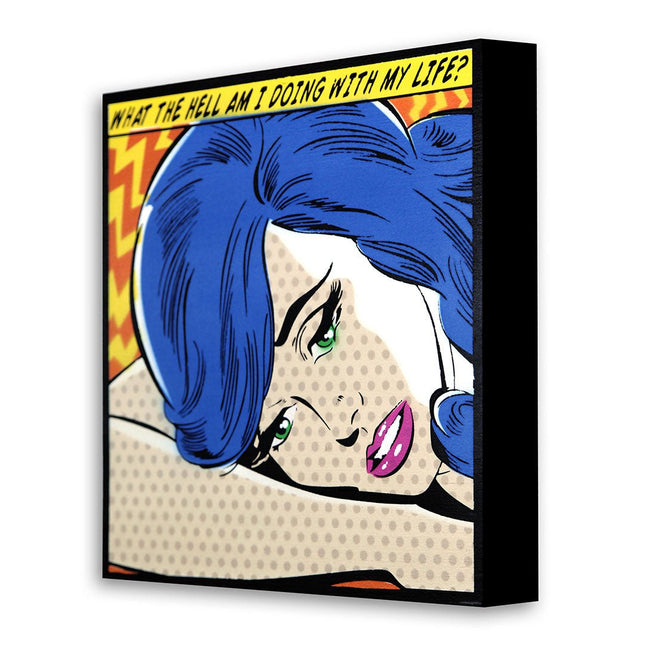
Denial- Daniel Bombardier What The Hell Am I Doing With My Life Mini HPM Wood Stencil Print by Denial- Daniel Bombardier
What The Hell Am I Doing With My Life- Mini, Part of the True Facts Mini Multiple Series Original Hand-Painted Multiple (HPM) on Wood Cradled Panel ready to hang by Denial Graffiti Street Artist Modern Pop Art. 2020 Signed & Numbered HPM Limited Edition of 20 Artwork Size 11x11 "My work speaks of impending doom and a lot of crass sinister themes, but that should not mean I desire this to happen at all. I hope my work would suggest only the opposite: to show the ridiculousness of it all and how we may find better solutions for the future." -Denial In the world of Denial, memory is important, because it is the basis of his work, as it nostalgically encourages the audience to engage with it. As a result, his art is as familiar, as it is disturbing because it reveals the most unsettling parts of society, the ones we are in a “denial” of. No matter its controversial history, graffiti is less and less viewed as a form of vandalism.
$1,068.00
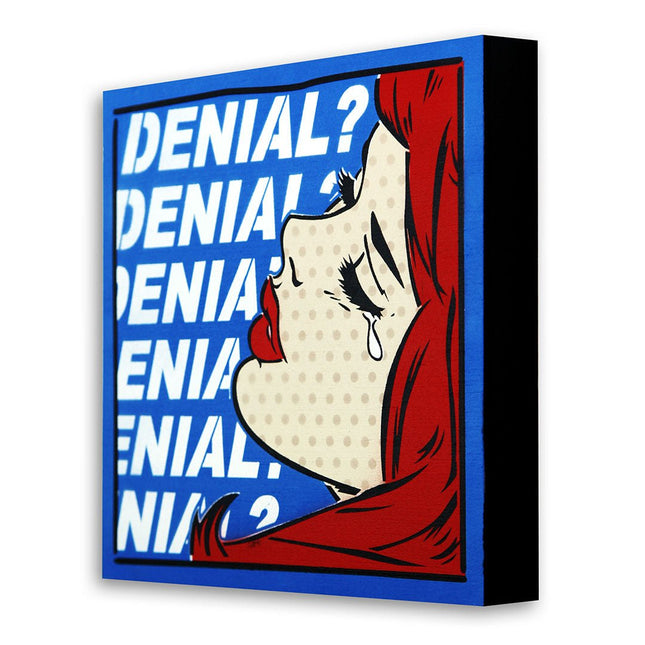
Denial- Daniel Bombardier Denial Denial Denial Mini Stencil HPM Wood Print by Denial- Daniel Bombardier
Denial Denial Denial- Mini, Part of the True Facts Mini Multiple Series Original Hand-Painted Multiple (HPM) on Wood Cradled Panel ready to hang by Denial Graffiti Street Artist Modern Pop Art. "My work speaks of impending doom and a lot of crass sinister themes, but that should not mean I desire this to happen at all. I hope my work would suggest only the opposite: to show the ridiculousness of it all and how we may find better solutions for the future." -Denial Denial is a Canadian artist who experiments with aerosol and stencil art, while his main fields of interest are consumerism, politics and the human condition in today’s society. Since the culture of graffiti was gaining more and more popularity in the US and Europe, the taggers had to be increasingly original in order to stand out. The signatures became bigger, more stylized and more colorful.
$1,068.00
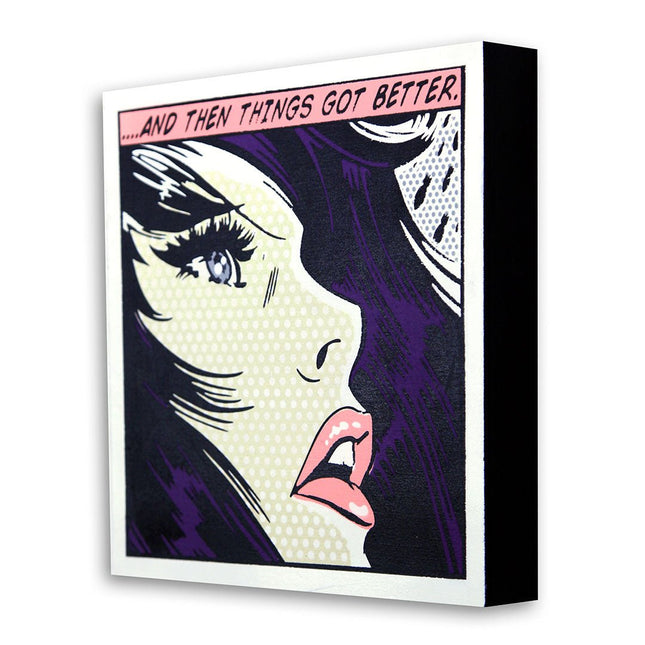
Denial- Daniel Bombardier And Then Things Got Better Purple Mini Stencil HPM by Denial- Daniel Bombardier
And Then Things Got Better- Purple Mini, Part of the True Facts Mini Multiple Series Original Hand-Painted Multiple (HPM) on Wood Cradled Panel ready to hang by Denial Graffiti Street Artist Modern Pop Art. "My work speaks of impending doom and a lot of crass sinister themes, but that should not mean I desire this to happen at all. I hope my work would suggest only the opposite: to show the ridiculousness of it all and how we may find better solutions for the future." -Denial Essentially, Denial is satirizing the reality, which both he and us are experiencing, through some of the Western culture’s most emblematic symbols. Denial is utilizing cultural products with the intention to make a statement against the system, which gave birth to them. As a result, he re-contextualizes them and transforms them from commercial products to his cultural legacy.
$1,068.00
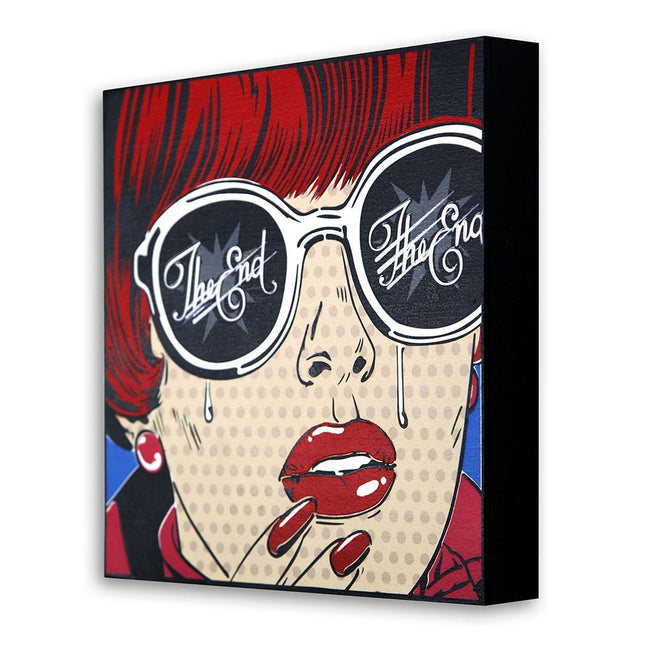
Denial- Daniel Bombardier The End Pt2- Mini HPM Stencil Print by Denial- Daniel Bombardier
The End Pt2- Mini, Part of the True Facts Mini Multiple Series Original Hand-Painted Multiple (HPM) on Wood Cradled Panel ready to hang by Denial Graffiti Street Artist Modern Pop Art. 2020 Signed & Numbered HPM Limited Edition of 20 Artwork Size 11x11 "My work speaks of impending doom and a lot of crass sinister themes, but that should not mean I desire this to happen at all. I hope my work would suggest only the opposite: to show the ridiculousness of it all and how we may find better solutions for the future." -Denial Denial is a Canadian artist who experiments with aerosol and stencil art, while his main fields of interest are consumerism, politics and the human condition in today’s society. Since the culture of graffiti was gaining more and more popularity in the US and Europe, the taggers had to be increasingly original in order to stand out. The signatures became bigger, more stylized and more colorful.
$1,068.00
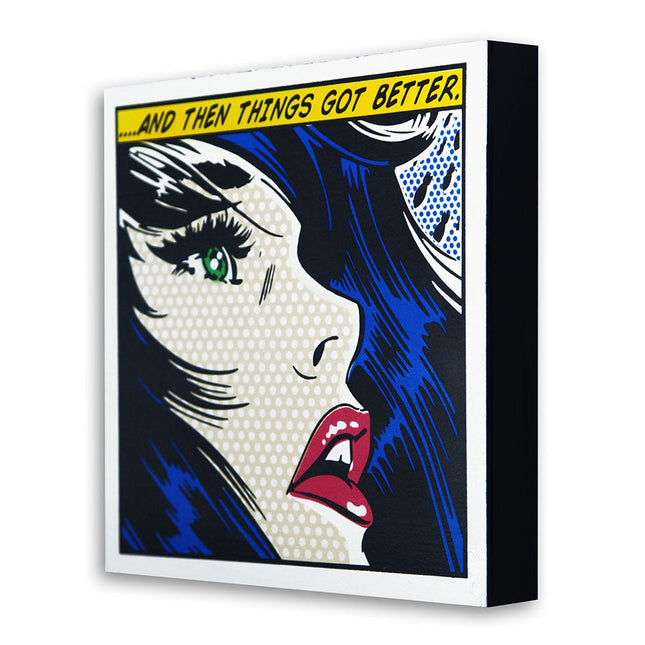
Denial- Daniel Bombardier And Then Things Got Better Mini Stencil HPM by Denial- Daniel Bombardier
And Then Things Got Better- Mini, Part of the True Facts Mini Multiple Series Original Hand-Painted Multiple (HPM) on Wood Cradled Panel ready to hang by Denial Graffiti Street Artist Modern Pop Art. "My work speaks of impending doom and a lot of crass sinister themes, but that should not mean I desire this to happen at all. I hope my work would suggest only the opposite: to show the ridiculousness of it all and how we may find better solutions for the future." -Denial Denial’s art is strongly political and social since the artist takes specific positions against issues, such as capitalism, consumer culture, and advertisements. More importantly, the artist is aware of his choices and motivations: “I like to think of myself as activist pop art. How I relate with cartoons and graphics is a lot easier than I do with photo-realistic stuff" Another aspect of Denial's work is humor. His work is satirical, which, by definition, means that it uses humor as a confronting mechanism.
$1,068.00






